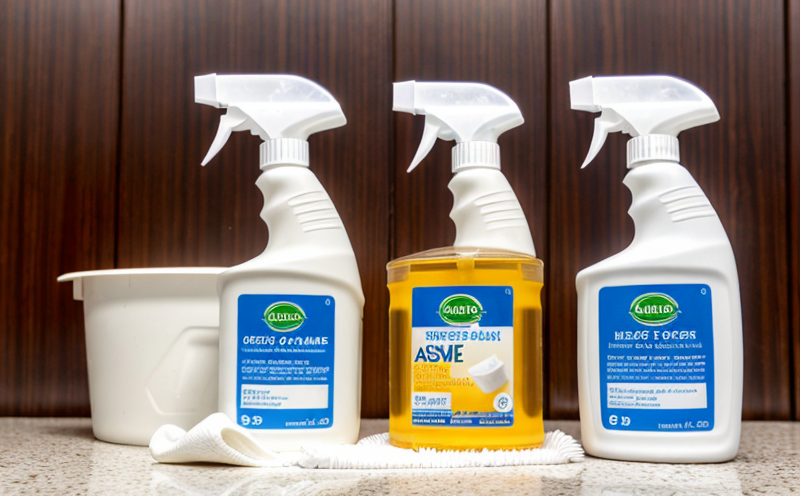ISO 22196 Antibacterial Activity Testing of Plastics in Hygiene Products
The ISO 22196 standard provides a framework for assessing the antibacterial activity of plastics used in hygiene products, ensuring that they effectively inhibit bacterial growth. This service is critical for manufacturers who require proof that their materials meet stringent hygiene standards. The test method involves exposing plastic samples to a variety of bacteria, including Staphylococcus aureus, E. coli, and others, under controlled conditions. Specimens are then evaluated based on the reduction in bacterial colony-forming units (CFUs) over time.
The process begins with precise sample preparation, ensuring that any potential contaminants are minimized. This includes selecting appropriate sizes of the plastic pieces to be tested, sterilizing them using autoclaving or gamma irradiation, and storing them under specified environmental conditions. The testing apparatus used is designed to simulate real-world exposure scenarios, allowing for accurate assessment.
The ISO 22196 protocol specifies the use of specific bacterial strains at defined concentrations. Samples are incubated in nutrient media containing these bacteria for a set duration. After this period, the CFUs on both treated and untreated controls are counted under a microscope or using automated colony counters. The antibacterial efficacy is determined by calculating the difference between the two readings.
For compliance with ISO 22196, it's essential to adhere strictly to all procedural details outlined in the standard. This includes the use of calibrated equipment and reagents, adherence to temperature and humidity controls during incubation, and precise timing for sample handling. Rigorous quality assurance measures are implemented throughout the process to ensure reliable results.
The outcomes from this testing service not only validate product safety but also provide valuable data for continuous improvement in material science and hygiene product design. Compliance with ISO 22196 is increasingly seen as a benchmark of trustworthiness, especially in sectors where public health is paramount.
- Quality Assurance: Ensures consistent performance across all batches
- Reliability: Provides repeatable results that can be trusted for regulatory compliance
Benefits
The ISO 22196 Antibacterial Activity Testing service offers numerous advantages to manufacturers of hygiene products. It ensures that the plastics used are effective at inhibiting bacterial growth, thereby enhancing product safety and consumer trust.
- Enhanced Safety: Demonstrates adherence to international standards for hygiene
- Increased Trust: Builds confidence in consumers who prioritize health and safety
- Regulatory Compliance: Meets stringent requirements for product certification
- Competitive Edge: Differentiates products as premium, health-conscious options
The service also provides critical insights into material performance that can drive innovation. By identifying the most effective antibacterial plastics, manufacturers can optimize their formulations and processes. This not only improves product quality but also supports sustainable practices by minimizing waste and promoting efficient resource use.
Furthermore, the test results offer a robust foundation for marketing claims regarding hygiene, allowing companies to communicate effectively with customers about the safety and efficacy of their products. In an increasingly health-conscious market, such transparency is crucial for building long-term customer loyalty.
Quality and Reliability Assurance
The ISO 22196 Antibacterial Activity Testing service places a strong emphasis on quality assurance to ensure consistent and reliable results. This includes rigorous calibration of all testing equipment, adherence to strict environmental controls during the incubation process, and meticulous sample preparation.
- Calibration: Ensures that all instruments are working within specified tolerances
- Environmental Controls: Maintains precise temperature and humidity conditions throughout testing
- Sample Preparation: Minimizes contamination risks to ensure accurate results
The laboratory employs trained personnel who follow standardized protocols to prevent human error. Regular audits are conducted to verify compliance with these procedures. Additionally, the use of advanced imaging technologies and automated systems enhances accuracy and reduces variability.
The reliability of ISO 22196 testing is further ensured by its alignment with international standards. This consistency across different laboratories allows for interoperability and comparability of results globally. The service also provides detailed documentation that can be used to trace the entire process from sample receipt to final report issuance, ensuring transparency and accountability.
Environmental and Sustainability Contributions
The ISO 22196 Antibacterial Activity Testing contributes positively to environmental sustainability by promoting the use of materials that enhance hygiene without compromising on ecological responsibility. The testing process itself is designed to minimize waste, with careful handling of samples and reagents.
- Minimized Waste: Efficient sample preparation reduces unnecessary material usage
- Eco-Friendly Processes: Use of energy-efficient equipment and sustainable practices throughout the lab
The results from this testing can inform the development of more sustainable products. By selecting plastics that are effective against bacteria without harmful environmental impacts, manufacturers can contribute to a healthier planet. This aligns with broader sustainability goals such as reducing plastic waste in landfills and promoting circular economy principles.
Moreover, the transparency provided by ISO 22196 testing allows for informed decision-making regarding material selection. Companies can choose materials that not only meet hygiene standards but also comply with environmental regulations. This dual approach ensures that products are both safe and responsible, addressing both public health concerns and ecological sustainability.





